How to Make Homemade Candles Using Essential Oils
Creating homemade candles with essential oils is a wonderful way to infuse your space with soothing scents and personalize your decor. Plus, they make for delightful gifts!
When it comes to gifting, you can’t go wrong with candles. They’re a useful and beautiful gift that people don’t always splurge on for themselves. Plus, they’re somewhat of a one-size-fits-all gift for hosts, Secret Santas, co-workers, etc.
And that’s why I, Erin always have these super cute essential oils DIY Rosemary Grapefruit Candles as my gift go-to’s. Because nothing says one of a kind more than a homemade gift?
Handcrafted with love, these DIY creations not only provide a soothing ambiance but also offer various therapeutic benefits. Making candles at home is a such an easy process! So discover the art of making your own candles below.
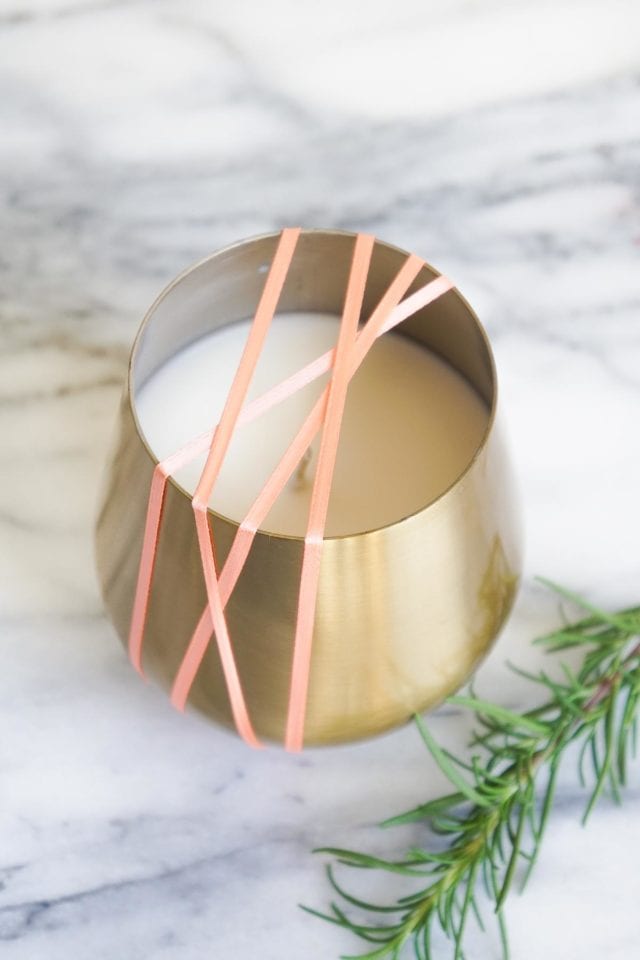
Materials Needed
- Soy wax flakes
- Candle wicks: We prefer using lead free cotton wicks since they’re cheaper and easier to maintain.
- Metal wick tabs: Or purchase pre-cut wicks that include tabs.
- Essential oils of your choice: We used grapefruit and rosemary oils for our DIY candles.
- Containers or molds: Ours are 16-ounce stainless steel gold brushed stemless wine glasses that we found at a local store. You can find similar ones here and here. Mason jars also make for great vessels.
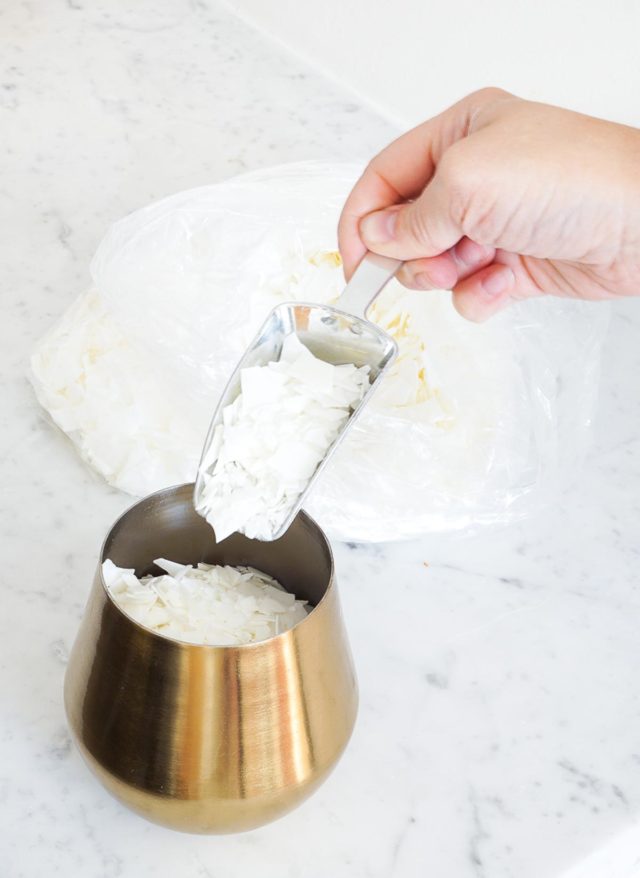
Choosing the Right Wax for Your Homemade Candles
After years of candle making, we’ve discovered that we prefer soy wax melts. Not only is soy wax non-toxic, it is also water soluble, making it a SNAP to clean up.
A good rule of thumb figuring how much wax you need is to double the volume of each candle vessel.
- Pure beeswax is also a non-toxic option, but it’s a nightmare to remove from kitchen surfaces, in case of any wayward drops.
- Paraffin wax is another common wax candle. It is cheaper than soy and beeswax. However, we prefer soy wax for its natural ingredients and slower burn time.
Some candles also call for a half beeswax and half coconut oil mix. But we found it simply easier to use one type.
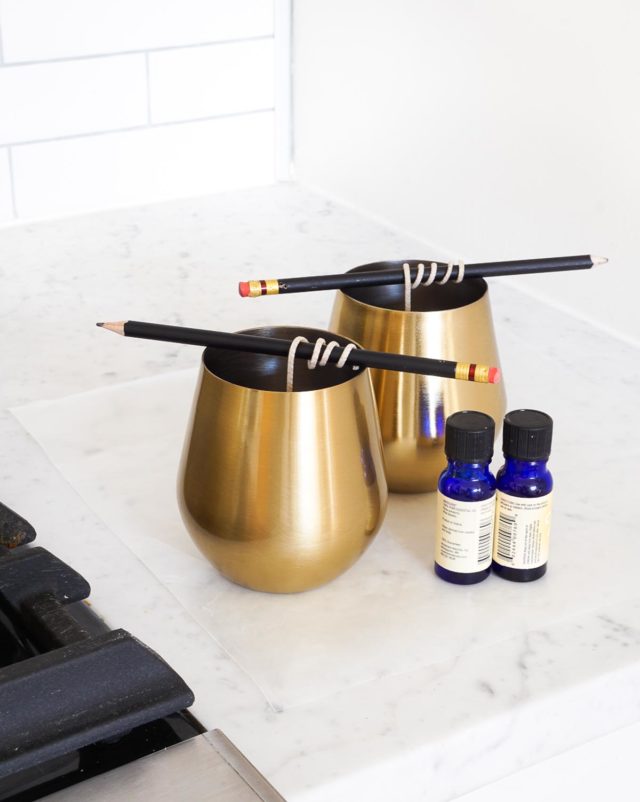
Selecting Essential Oils for Scented Candles
Using essential oils is a more natural way to scent your candles versus synthetic fragrance oils. The recommended essential oil to soy wax ratio is 1 ounce to every pound of wax.
Selecting the right essential oils for scented candles is crucial in achieving the desired fragrance and ambiance. Choose high quality undiluted pure essential oils to get the strongest scent. Then, determine the mood or purpose you want to achieve with your scented candle. Some popular essential oil benefits include:
- Grapefruit: Citrus oils invigorate the senses, boosts mood, and increases alertness.
- Rosemary: Enhances memory and concentration for focus and clarity.
- Eucalyptus: Clears the mind and promotes mental clarity.
- Lavender: Promotes relaxation and eases stress.
- Neroli: Elevates mood, reduces feelings of anxiety, and instills a sense of positivity.
- Sweet orange: Sets a cheerful mood and also repesl insects such as mosquitoes, ants, and flies.
- Vanilla: Creates a warm and comforting atmosphere.
If you have any leftover essential oils, make your own homemade diffuser!
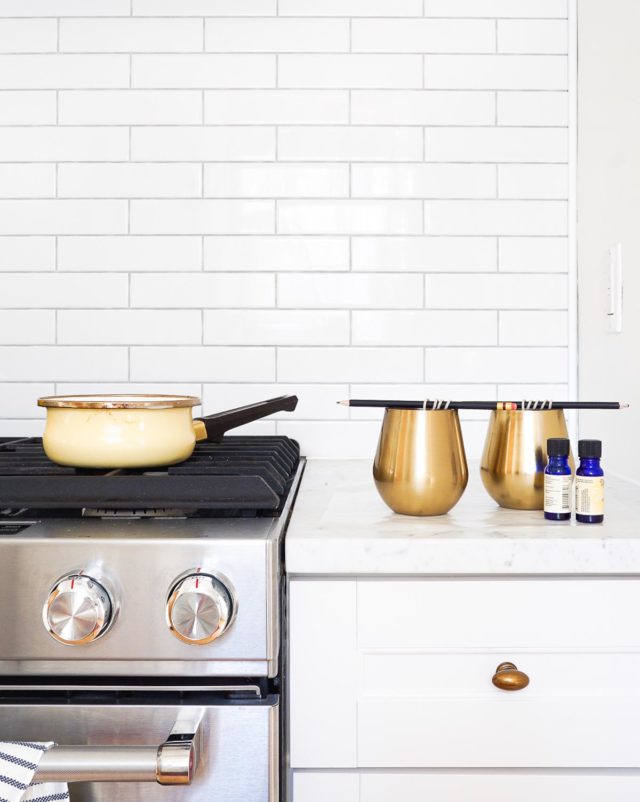
Tools Needed for Making Homemade Candles
Most DIY candle making recipes call for a double boiler so that you avoid contaminating your kitchen with wax. But if you don’t already own a double boiler, forget the need for it! You’ll save yourself time with the set up and money from investing in an overpriced candle making pour pot.
Here’s all the equipment that you’ll need:
- Pencils, wood dowels or chopsticks :To hold wicks in place.
- Parchment or wax paper: Before you begin, prep your workspace by laying parchment or wax paper down next to your stove. You’re bound to get some spillage, and soy wax is easy to clean. However, wax paper eliminates the need for any scrubbing.
- Dedicated saucepan: We thrifted a saucepan that’s dedicated to candlemaking only and melted the wax directly in the pan on low heat.
With this method, you’ll want to stir pretty frequently, and remove the pan from heat as soon as the chips are melted. However, it’s less set up/clean up and less expensive than buying a double boiler.
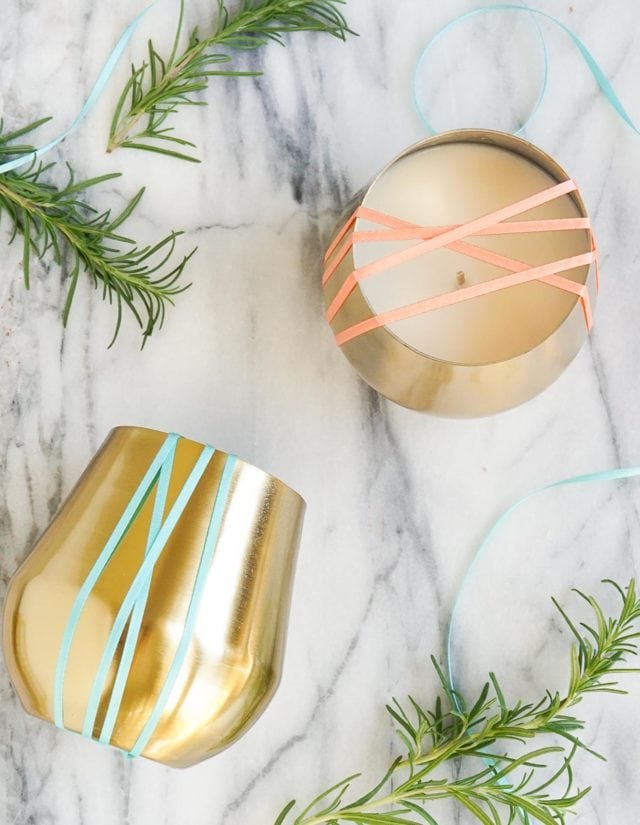
How to Make Candles with Essential Oils
1 — Set your wick in place by centering it inside your container. (If you did not purchase wicks with tabs or plates, make sure to connect them beforehand.) Make sure that the wick plate touches the bottom. Then, wrap any extra wick around a pencil. Use the pencil to keep the wick centered and upright.
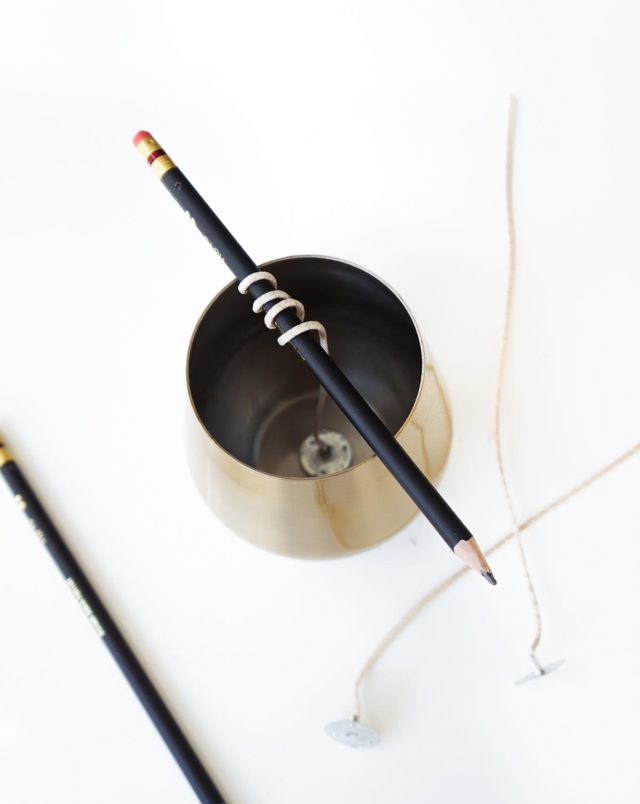
2 — In the saucepan on low heat, pour in the wax and stir frequently. Once the wax is melted, remove it from heat and let it cool slightly.
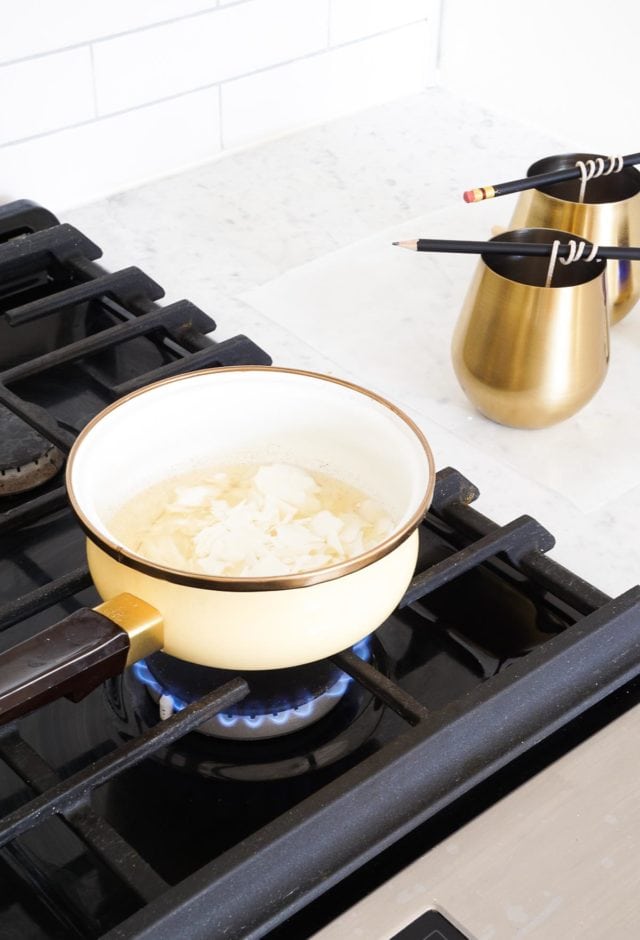
3 — Add and stir in the essential oils of your choice, about 20-30 drops per candle. Adjust according to your preference for scent strength.
4 — Carefully pour the scented wax into your prepared containers. Leave a bit of space at the top to prevent spillage. Allow the candles to cool to a solid state. Avoid moving them while they’re setting.
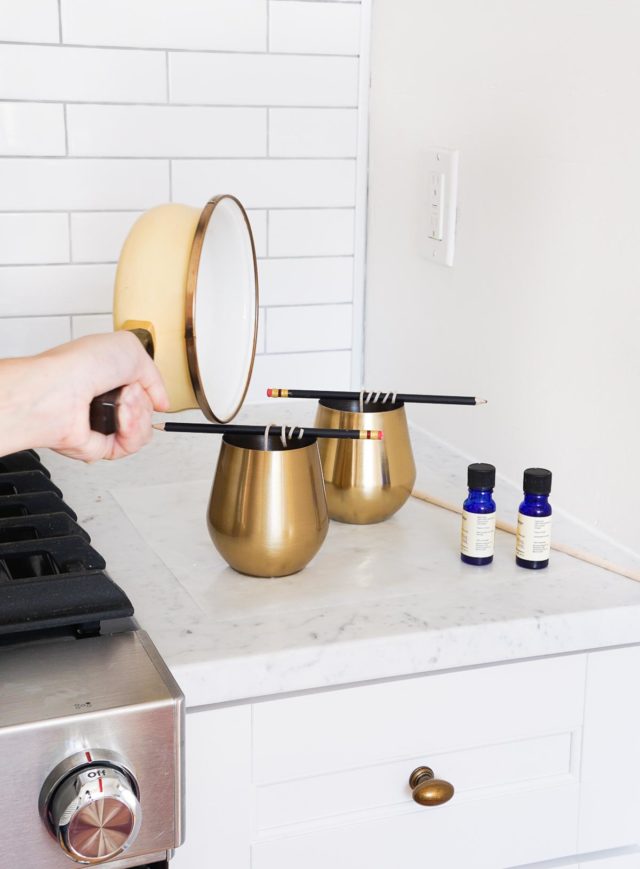
5 — Once the candles have fully cooled, trim the wick to about 1/2-inch above the wax surface.
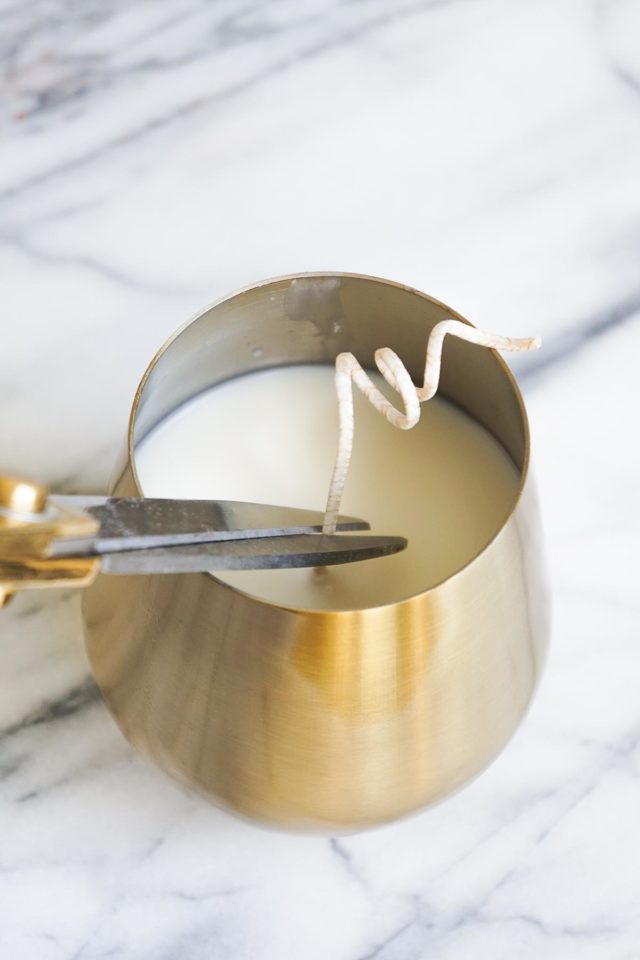
How to Creatively Gift Wrap a Candle
If you’re gifting your essential oils candle, here’s how to creatively wrap it!
1 — First, wrap the candles top to bottom with ribbon and secure with a piece of tape on the bottom of the container.
2 — Then, garnish with rosemary sprigs.
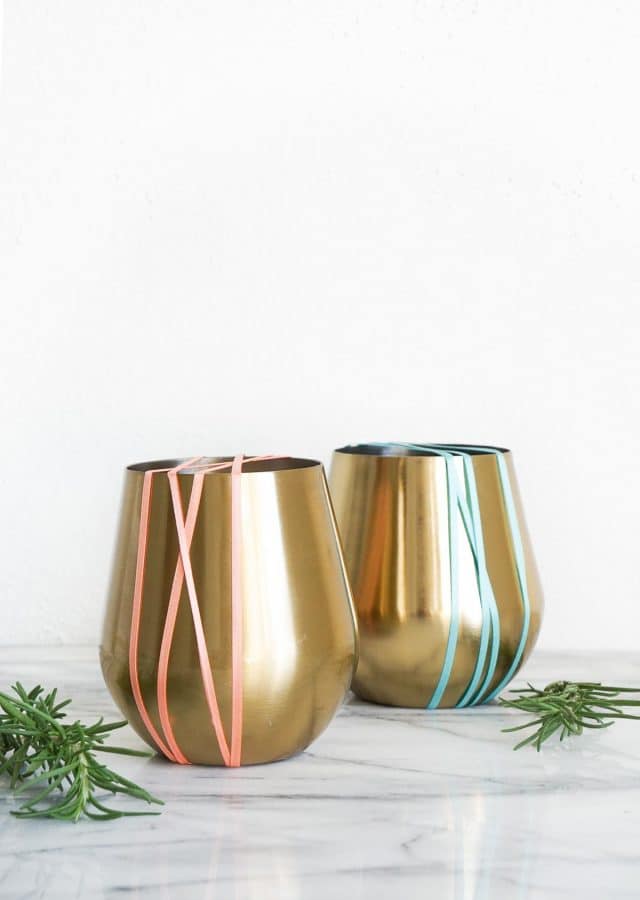
More Easy Candle & Aromatherapy DIY’s
Whether you are looking to relax and unwind after a long day or create a cozy atmosphere for a special occasion, these candles can effortlessly transform your home. And once you’ve got this essential oil candle recipe down, have fun and start experimenting! Incorporating dried flowers or herbs into the candles. Or even try dying the wax.
In case you’re looking for a few other candle and aromatherapy DIY ideas, here are some of our favorites from the archives —
- Retro DIY Faux Wood Candle Holder
- Dual DIY Copper Candle Holder
- Rainbow DIY Taper Candle Holder
- Wooden Taper Candle Holder
- Balloon Dipped DIY Citronella Candles
- DIY Giant Birthday Candles
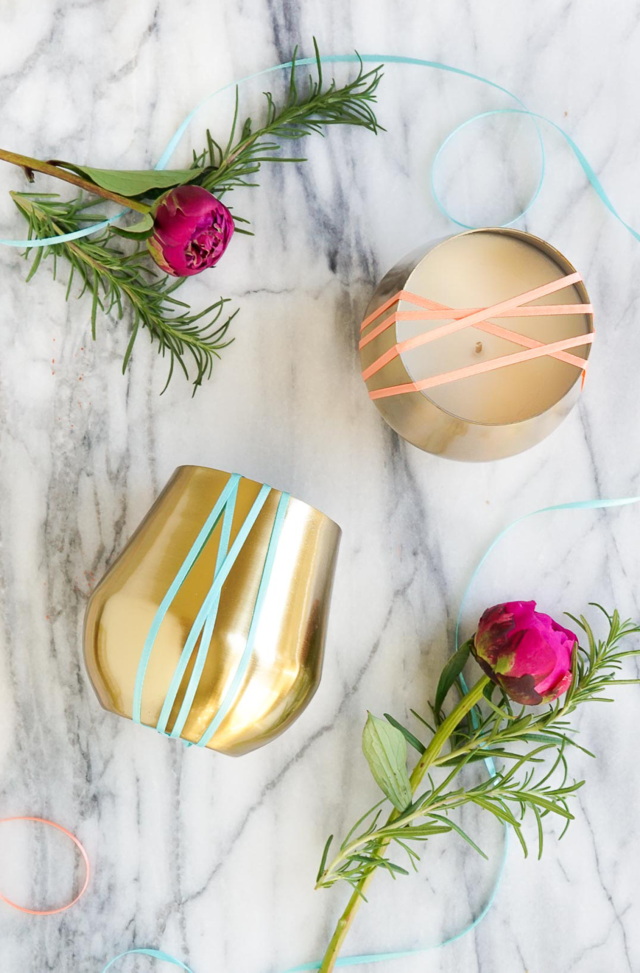
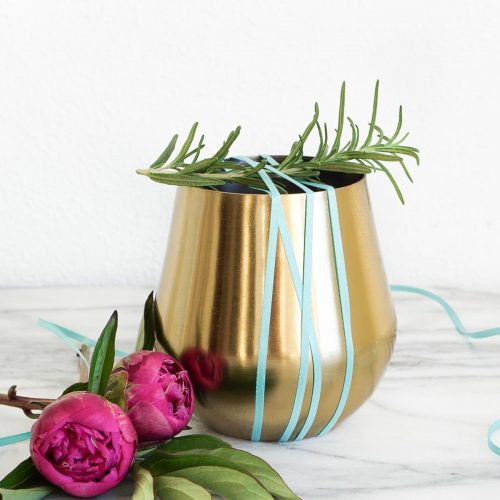
How to Make Homemade Candles Using Essential Oils
Equipment
- Parchment paper or wax paper to cover your workspace
- Pencils or wood dowel or chopsticks
- Dedicated saucepan for candle making
Materials
- 2 lbs soy wax flakes or measure the amount needed by filling them in your containers
- 2 candle wicks with metal tabs
- 20-30 drop essential oils or your choice. We used grapefruit and rosemary.
- 2 containers for candleholder
Instructions
- Set your wick in place by centering it inside your container. (If you did not purchase wicks with tabs or plates, make sure to connect them beforehand.) Make sure that the wick plate touches the bottom. Then, wrap any extra wick around a pencil. Use the pencil to keep the wick centered and upright.
- In the saucepan on low heat, pour in the wax and stir frequently. Once the wax is melted, remove it from heat and let it cool slightly.
- Add and stir in the essential oils of your choice, about 20-30 drops per candle. Adjust according to your preference for scent strength.
- Carefully pour the scented wax into your prepared containers. Leave a bit of space at the top to prevent spillage. Allow the candles to cool to a solid state. Avoid moving them while they're setting
- Once the candles have fully cooled, trim the wick to about 1/2-inch above the wax surface.
Notes
- Essential oils have different flash points, meaning they have their own ideal burn temperatures. If you want the scent of your candle to last as long as possible, use a candle thermometer to measure the temperature of your wax before adding your essential oil.
- Grapefruit has a flashpoint of 109° F (43° C) and rosemary at 104° F (40° C). Therefore, when melted wax is cooling, wait until it reaches about 104°-109° F before adding in your grapefruit and rosemary essential oil. This temperature will allow the oils to release at its highest form.

Please note that we may earn a commission for some of the above affiliate links. However, products featured are independently selected and personally well-loved by us!
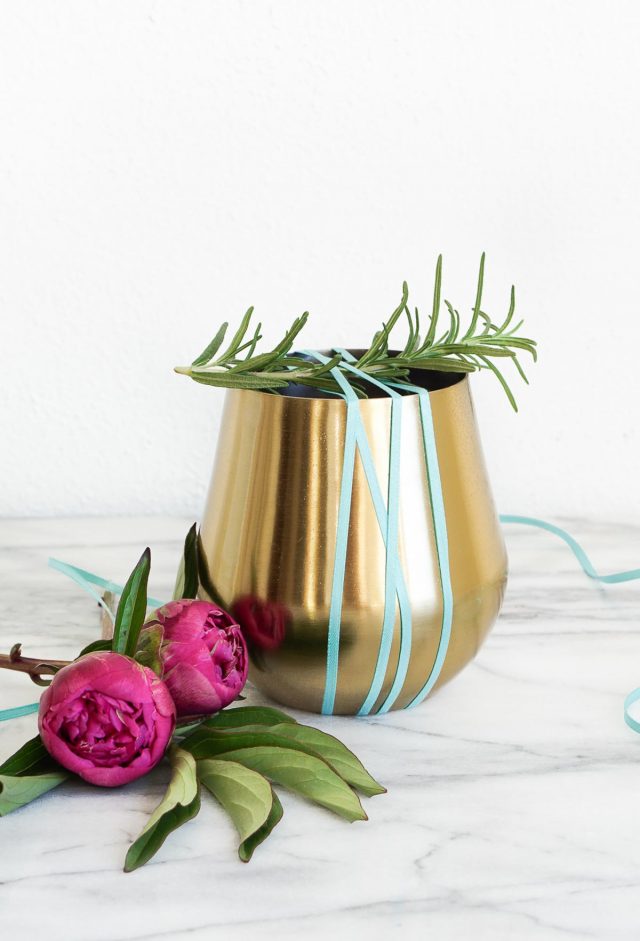



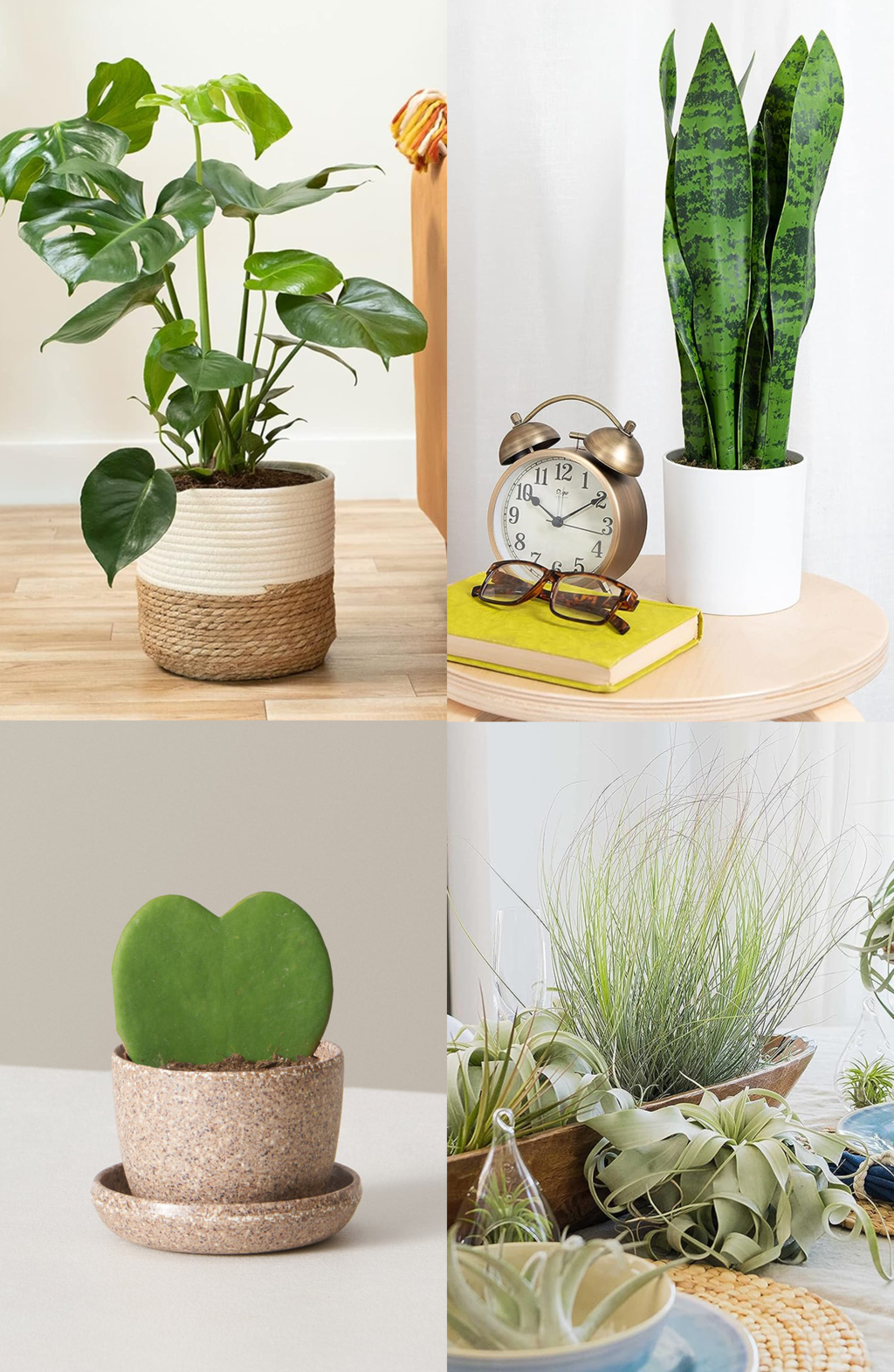
I like the pencil trick. You make it look so easy!
Thanks, Beth! It really is easy to make!
What a beautiful decoration it is , really i loved it very much. keep going on Ashley
Thank you! XOXO
Hi, thanks for the insightful article above on making homemade candles. My partner and I are trying to do the same, but it seems the hot throw isn’t quite that strong… We are using pure essential oils only (no fragrance) to keep things all natural. What do you recommend? You can check my post about the best essential oils for candles here https://www.vinevida.com/blogs/our-blog/10-best-essential-oils-for-candles-make-your-candle-and-bring-the-target-scent
Thanks!
Hi! Have you looked more into the flashpoint temperature. It is dependent of the type of essential oil you are using and its flashpoint will optimize the scent. Too hot or too cold will not use the essential oil to its full potential. We would also recommend using high quality essential oils. And you can also always just add more drops for a stronger scent! Hope this helps!
These are so cute! I love this idea for gifts!
Thank you, Rachael!
I love this idea! They look so cute and adorable! My daughter loves projects like this! Can’t wait to make these with her!
Let us know how they turn out, Beth! XOXO
I’m so excited to try making these. Your step by step instruction photos help me see that it’s not as intimidating as it seems to make my own candles. And I LOVE the scent combo – rosemary and grapefruit. BEAUTIFUL website and GORGEOUS ideas! Thanks
Thank you so much, Lisalia. We are so glad to hear that we made these easy to follow! They seriously are easy to make!
They look amazing and I think I saw your site and made my first soy wax candle.
However, I noticed that you don’t follow the essential oils’ flashpoint rule. Rosemary and Grapefruit are 2 of my fax scents for candles, hand creams etc, but they both have very low flashpoint at around 40-45 (CF). looks like you poured oils above this temperature, which will burn out the essence. Does your candle smell ok making this way? I made my second batch (my first batch, the same as your way, wasn’t strong at all) following the flashpoint rule, definitely last long and strong.
Also noticed Soya wax can be applied as hand cream which for me was a huge added bonus :)
Hi Shoko! We are so glad you’ve been following our site for a long time and trying all the DIY’s. This is such interesting and informative information about the flashpoint for rosemary and grapefruit. We are going to look into this and ask our contributor also who helped us with the post! Thank you so much for this info!
Love these! Im curious how much waX you used per candle? I see dOuble the aMount of the candle Vessel, but can you gIve an approx amount for ordering purposes?
Hi Kylnn! So glad you like the DIY. I believe Erin based the amount she ordered on the measurements of the vessel online!
I love the gold pots you made these in! Candles Make such great gifts, really want to make some myself after Reading this!
Isoscella | http://www.isoscella.co.Uk
Totally agree! Glad you like the project! xo
What brand oils did you use? I see the label isn’t displayed in photos.
Hi Beth, we’ve linked to some of our favorites in the post!
So surprised by how easy this is! Where did you get your pots from?
– Natalie
http://www.workovereasy.com
Hi Natalie! Erin got the gold pots from Target :) http://rstyle.me/n/b77hcnnjn6
You make it look so easy. I certainly want to make some now.
Erin is pretty much a genius!